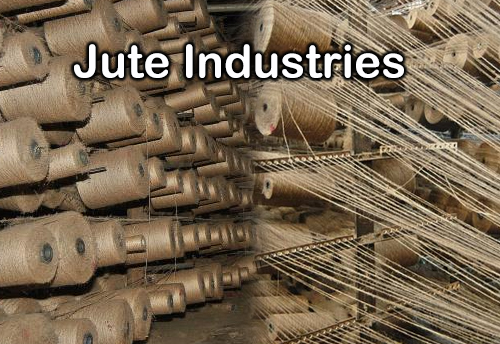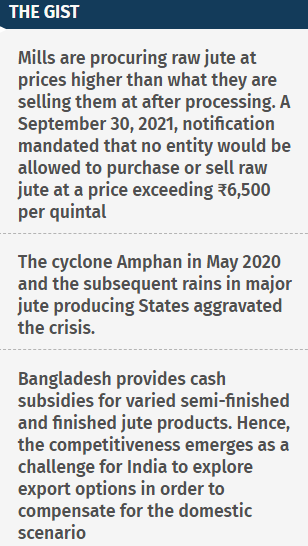Free Courses Sale ends Soon, Get It Now


Free Courses Sale ends Soon, Get It Now



Disclaimer: Copyright infringement not intended.
Context
Background
Issue
Supply Crunch
Impact

India’s Jute Industry
Jute as a crop and its benefits
|
Climatic Requirements Temperatures ranging to more than 25 °C and relative humidity of 70%–90% are favorable for successful Jute cultivation. Jute requires 160–200 cm of rainfall yearly with extra needed during the sowing period. River basins, alluvial or loamy soils with a pH range between 4.8 and 5.8 are best for jute cultivation. Constant rain or water-logging is harmful. The new gray alluvial soil of good depth, receiving salt from annual floods, is best for jute. Flow ever jute is grown widely in sandy loams and clay loams.
Retting is a process in which the tied bundles of jute stalks are taken to the tank by which fibres get loosened and separated from the woody stalk. The bundles are steeped in water at least 60 cm to 100 cm depth.
Stripping is the process of removing the fibres from the stalk after the completion of retting. |
Problems of Jute Industry in India
The major problems of Indian Jute Industries are mentioned below:
|
Dire situation The jute industry of West Bengal primarily supplies its produce to the government of India for food grain packaging. The price of these bags saw a corresponding rise with the spiking rates of raw material. As a result, the union government passed an order in September 2021 to cap the prices of raw jute and B-Twill (the gunny bags used to package food grains) at Rs 6,500 per quintal. However, the market price of raw jute, as well as its price in Bangladesh, is around Rs 7,200 per quintal, which is why the “industry is forced to buy it at higher prices to keep the mills running”. “The scenario is extremely critical as there is no enough compensation for the prices. And as far as profitability is concerned, it’s a very difficult situation. In 2021 a notification was issued on increasing the GST rates on jute products from 5% to 12%, worsening their plight. |
Steps taken by the Government
The following measures have been taken for improving the Jute mills.
These measures are not enough to address the looming crisis the industry faces. Lack of implementation of existing initiatives is another problem.
Prospects
Way Ahead
https://epaper.thehindu.com/Home/ShareArticle?OrgId=GV29Q7PQV.1&imageview=0
© 2024 iasgyan. All right reserved